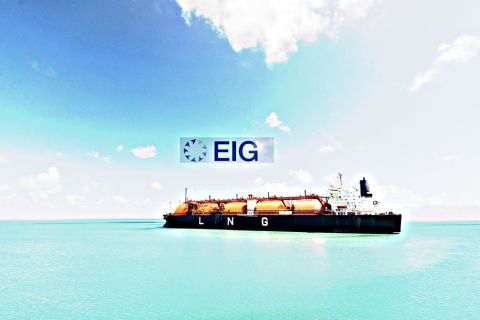It’s something of a commonplace to say that an economic downturn is an opportunity to implement new technologies. Still, things should be a bit slower than otherwise. And we base our lives on the conviction that work done today will pay dividends in the future. Halliburton, the oil & gas equipment and services giant, said in its recent Q4 2008 earnings call that, even given the severity of today’s downturn, it will continue to take the steps, including on-going technology investment, needed to protect its strong U.S. market position and grow its international operations. In a recent interview, Tim Probert, Halliburton executive vice president, strategy and corporate development, outlined some technologies he believes it is worthwhile for operators to look to during the doldrums, and those differentiating services he believes will keep Halliburton competitive, today and on to the inevitable upswing. “This is the fifth cycle the petroleum industry has experienced in the last 25 years. As an organization, Halliburton is used to managing them,” Probert said. “Notwithstanding the volatility we’ve seen in pricing the last several months, there are characteristics in the reservoirs being drilled, completed, and stimulated today — they are smaller, more complex, and more unconventional, including gas shales and heavy oil — such that technology remains the key to unlocking those resources.” Besides maintaining a robust technology investment profile during the down cycle, said Probert, “it’s also important to be aligned in the right regions and basins, and to have the kinds of ongoing activities most needed. Particularly with the shale plays, where a larger percentage of the wells drilled are horizontal, the service intensity is considerably more than with vertical wells, with significant amounts of stimulation required.” The need for innovative technologies is especially pronounced in offshore environments. The Gulf of Mexico, for example, is a very important petroleum resource, Probert says, and deep water in particular has captured imaginations in terms of advances that have been made. Nevertheless, operators there are looking for more. “Customers say we’re very good at well construction, but they would like us to be more involved in completions. Slightly more than half of all completions in the Gulf of Mexico require sand control. They would like to see us work on technologies that reduce the complexity of comprehensive sand control.” To meet this need, says Probert, Halliburton has developed a “single-trip, multi-zone system for deepwater reservoirs, where one trip into the hole performs sand control and stimulation on multiple zones.” He estimates that use of the system can save ten to 20 days of work compared to traditional methods, a significant benefit when rig costs can run $1 million a day. It wouldn’t be an innovation discussion if the digital revolution didn’t come into it, and Probert believes digital simulation models and visualization technologies can have real impact in deepwater environments for placement of tools during completion, and to “insure integrity of service.” Moreover, a raft of real-time data and collaboration technologies can provide tremendous advantages and opportunities, “both on- and off-shore, including the ability to move all forms of critical data back to an operations center that may be thousands of miles away, manned with people with expertise. This allows us to ensure we’re modeling the process to identify deviations, to identify challenges and problems, and even to play a mentoring role through involvement of very experienced people that can lend value to the data that’s being received.” Today, Halliburton has 20 of these operations centers around the world. It’s widely recognized that the standardization of process and production control that’s been applied in manufacturing and process industries the last twenty years hasn’t taken hold to the same degree in upstream oil and gas. And that’s with good reason. “The thought process has been that there is more variability in petroleum industry processes,” said Probert, “which isn’t amenable to automation. But already today, while there may be considerable variation in terms of stimulation, we’re seeing a higher degree of automation in drilling. Rotary steerable technologies are able to move the drill bit on the well path by means of a kind of cruise control.” Finally, in unconventional gas resource development, Probert mentioned one additional technology innovation. “With micro-seismic technology, involving use of observation well bores, a wireline array of geophones are placed downhole while nearby wells are being stimulated. This technology is becoming more important in that about 90% of these wells require stimulation. “As the wells are fractured, a micro-seismic signature is created that allows us to map their extent and visualize them in the context of an earth model, to see how the fracture propagates. Thereby, we can be much more effective in the placement of those fractures and in terms of the subsequent placing of wells and designing of fractures. Our customers in the more expensive and deeper shale plays are very keen to ensure each well is successful.” So there you have it, despite economic and petroleum cycles, despite the credit crunch and price volatility, and due to increasing complexity, mastering technology remains the key to success in upstream oil & gas.
Recommended Reading
Nebula Energy Buys Majority Stake in AG&P LNG
2024-01-31 - AG&P will now operate as an independent subsidiary of Nebula Energy with key offices in UAE, Singapore, India, Vietnam and Indonesia.
Mexico Pacific Appoints New CEO Bairstow
2024-04-15 - Sarah Bairstow joined Mexico Pacific Ltd. in 2019 and is assuming the CEO role following Ivan Van der Walt’s resignation.
Mitsubishi Makes Investment in MidOcean Energy LNG
2024-04-02 - MidOcean said Mitsubishi’s investment will help push a competitive long-term LNG growth platform for the company.
Shell’s CEO Sawan Says Confidence in US LNG is Slipping
2024-02-05 - Issues related to Venture Global LNG’s contract commitments and U.S. President Joe Biden’s recent decision to pause approvals of new U.S. liquefaction plants have raised questions about the reliability of the American LNG sector, according to Shell CEO Wael Sawan.
Tellurian, Institution Investor Agree to New Loan Repayment Terms
2024-02-22 - Tellurian reached an agreement with an unnamed institutional investor to pledge its interest in the Driftwood project as collateral.




